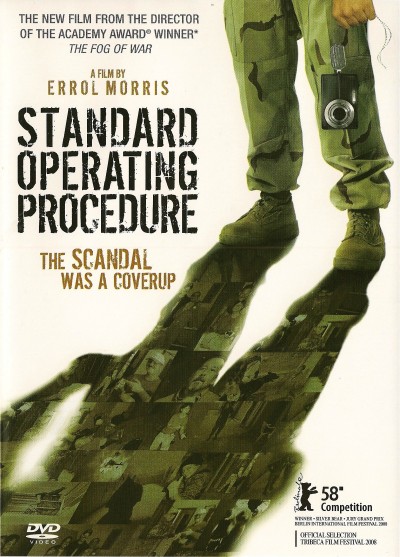 Standard Operating Procedure – (2008, directed by Errol Morris, 116 minutes, US)
Standard Operating Procedure – (2008, directed by Errol Morris, 116 minutes, US)
Abu Ghraib. The name itself conjures up obscene images, unspeakable things — things we would rather remain hidden. Abu Ghraib. It pulls on some deep dark place inside the national conscience where morality wrestles with duty and loses every time. It was Saddam Hussein’s prison, his palace of torture where the haunted walls witnessed the brutal evisceration of 30,000 souls. And then it became ground zero of the American Inquisition. The first part is on him, but the second part is on us, and best I can tell neither ever owned up to that awful fact.
In his 2008 documentary Standard Operating Procedure, director Errol Morris peers into the fog of dread that is Abu Ghraib, and presents to us the spectacle of personal and political moral failure that led the United States to its most embarrassing moment since the massacre at My Lai in 1968. And just like My Lai, it’s the pictures that reveal the horror. Morris juxtaposes the infamous photographs from the prison with interviews with many of the people who took, and some times appeared in, those photos in a way that challenges us to witness the events at Abu Ghraib not just as a failure of military authority, but as a complete collapse of our humanity and with it our moral authority. We were no longer the good guys.
The outraged visage of Brigadier General Janis Karpinski (800th MP Brigade), the commanding officer at Abu Ghraib, sets the tone. She describes how, shortly after Secretary of Defense Donald Rumsfeld visited Hussein’s hanging chambers, she was informed by General Miller, “the guru of interrogation,” that parts of the facility would be “Gitmoized” and turned over to Colonel Pappas for use with high security prisoners. She goes onto describe a largely unsupervised clandestine operation in which the only rule was to obtain actionable intelligence. Narrating action in the photographs, civilian and military participants describe dehumanization and brutality as a matter of standard operating procedure. Rumsfeld and Bush acted like this was the exception to the rule, when in fact it was the rule.
The interviewees describe Abu Ghraib’s prisoner population as mostly innocent men and boys swept off the streets and imprisoned without judicial restraint, left to literally be eaten alive by flesh-eating ants, raped by fellow inmates, or tortured and sexually abused by American personnel — in at least one documented incident, to the point of death. What Morris puzzles together from these interviews is the emergence, and awful consequences of, a culture of perversion that bled from the top of our government to the roots of our enlisted men and women. Perhaps the most disturbing thing about Standard Operating Procedure, nobody shows any real signs of remorse. — DAVID CORBO
